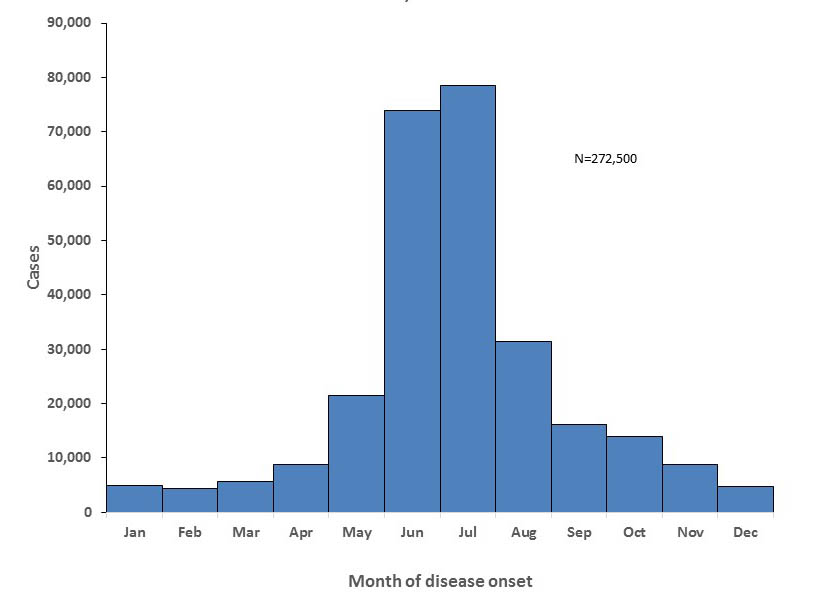Lyme disease risk factors
|
Lyme disease Microchapters |
|
Diagnosis |
|---|
|
Treatment |
|
Case Studies |
|
Lyme disease risk factors On the Web |
|
American Roentgen Ray Society Images of Lyme disease risk factors |
|
Risk calculators and risk factors for Lyme disease risk factors |
Editor-In-Chief: C. Michael Gibson, M.S., M.D. [1];Associate Editor(s)-in-Chief: Anmol Pitliya, M.B.B.S. M.D.[2], Ilan Dock, B.S.
Overview
Because Lyme disease is a tick-borne disease, an individual is at a heightened risk of contracting it when traveling or residing within endemic regions. Risk within endemic regions is higher during the spring and summer months, with peaks in June and July. Other factors that may increase the risk of contracting Lyme disease include owning a domesticated animal such as a dog or cat, as both of these pets may be potential hosts for a blacklegged tick. In summary, individuals who spend much of their time outdoors and/or have pets that go outdoors and who live in endemic regions, are at a higher risk of contracting tick-borne diseases.
Risk factors
Individuals who spend time outdoors and/or have pets that go outdoors in endemic regions are at risk for tick-borne disease. [1]
Exposure to ticks
- Individuals with frequent exposure to dogs and who reside near wooded areas or areas with high grass may also be at increased risk of tick-borne infection.
- Individuals with outdoor occupations and who work outside with bare or exposed skin are at a high risk of contracting Lyme disease.
- Failing to remove a tick as soon as you see it on your skin (the longer a tick is attached to your skin, the greater your risk of developing Lyme disease) also increases risk of developing Lyme disease.[2]
Endemic Regions
- About 95% of all reported cases are confined to 14 states including Connecticut, Delaware, Maine, Massachusetts, Minnesota, New Hampshire, New Jersey, New York, Pennsylvania, Rhode Island, Vermont, Virginia, and Wisconsin.[3][4]
- Any individual traveling or living within these five geographic areas including New England, Mid-Atlantic, East-North Central, South Atlantic, and West North-Central is at a heightened risk of exposure to Lyme disease.
Seasonal Variation
- The majority of Lyme disease cases are reported during the summer months of May to August.
- Case incidence increases in May (estimated 20,000 cases reported between the years 2001-2015), peaks in June and July (estimated 70,000-80,000 cases reported between the years 2001-2015), and tapers off in August (just above 30,000 cases reported between the years 2001-2015).

Rarer forms of Transmission
- Cases of blood transfusion and organ transplantation have been recorded as methods of transmission but this is a rare mode of transmission. [5]
References
- ↑ General Information (2015). http://www.cdc.gov/ticks/index.html Accessed on December 30, 2015
- ↑ "Lyme disease: All - MayoClinic.com". Retrieved 2013-03-14.
- ↑ "Lyme disease data tables | Lyme Disease | CDC".
- ↑ "Data and Statistics | Lyme Disease | CDC".
- ↑ Lyme disease transmission. Centers for Disease Control and Prevention. http://www.cdc.gov/lyme/transmission/index.html Accessed February 9, 2016.